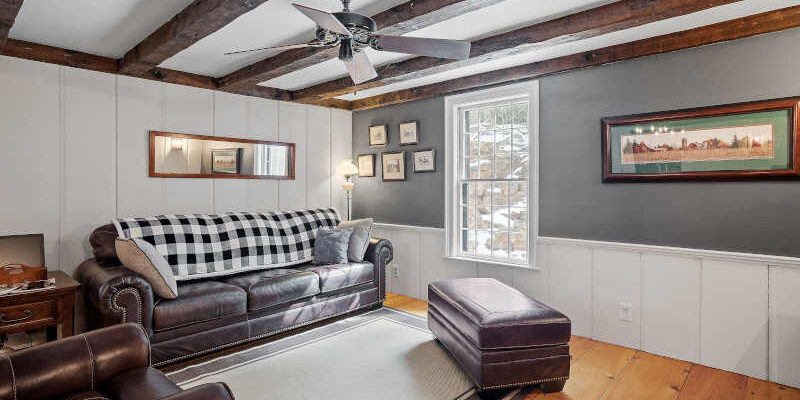During the summer, your ceiling fans are excellent for keeping your house cool. Did you know that ceiling fans can also improve the warmth and comfort of your house during the winter?
In addition to providing warmth, ceiling fans can reduce energy use when utilized in the winter. Every homeowner in the High Desert will benefit from this arrangement.
How Do Ceiling Fans Work?
Everyone is aware that using ceiling fans can make you feel cooler. The fans produce a wind that might encourage perspiration to evaporate, cooling the body.
Homes benefit greatly from ceiling fans since they aid in distributing and circulating the air in the space. The whirling fan blades essentially produce a wind-chill effect and actually make a room seem cooler. Experts claim that you can decrease your thermostat by 4 degrees without noticing a difference in comfort since operating a ceiling fan is so effective at lowering the ambient temperature.
Do Ceiling Fans Help in the Winter?
Fewer people are aware that ceiling fans can be used in the same way in the winter as they do in the summer, even though many are familiar with how they operate. However, using ceiling fans in the winter might make it easier to heat a space. You must first discover the switch on the fan that controls the blade’s direction in order to make use of them.
The blades must rotate counterclockwise in the summer to produce the wind-chill effect. The majority of fans always use this setting. By turning on your fan and determining its direction, you may test it. If necessary, turn the fan so that it spins counterclockwise to improve heating.
How to Operate Winter Ceiling Fan
The blades raise air by turning in a clockwise motion. This is essential for creating a cozier space throughout the heating season. That’s because the wind-chill effect is produced as the blades force air downward, aiding in the process of evaporation. You will feel cooler if you leave the setting in this mode.
But when the fan is in the heating mode, the blades force air upward to improve heat distribution. This is how:
- The rotating blades pull air from all throughout the space and push it upward and upward toward the ceiling.
- The top of the room’s air is being forced toward the walls and room’s boundaries by the force of the air.
- The air then descends to the ground once more.
- Since the air at the top of a room is warmer, when the air is forced back down to the bottom of the room, the entire space begins to seem warmer.
- The cycle is repeated.
- The temperature of the space increases.
How Ceiling Fans Can Save You Money & Energy in the Winter
According to some estimates, homeowners who utilize ceiling fans in the winter can reduce their heating bills by as much as 15%. Thermostats can be lowered because the room has better heat distribution. By doing that, your heater uses less energy and runs less frequently.
However, it’s crucial to pick an energy-efficient fan to achieve maximum savings and comfort. Choose an ENERGY STAR-rated ceiling fan to reduce energy usage by up to 60% compared to regular fans by using superior motors and creative blade designs.
Winter Ceiling Fan Use: How NOT to Use Them
Contrary to your heater or air conditioner, ceiling fans shouldn’t be left on all the time, even if no one is in the room. Most of the time, in order to take advantage of the improved heating provided by ceiling fans, you must be present in the room. You don’t want to enter each room of the house, turn on the ceiling fans, and then leave. Heat won’t be dispersed throughout the house by the fans.
Maintain Year-Round Comfort in Your Home
When you need expert HVAC service, don’t hesitate to call Elite Climate Control. These energy savings can keep your house toasty when the weather becomes chilly.




